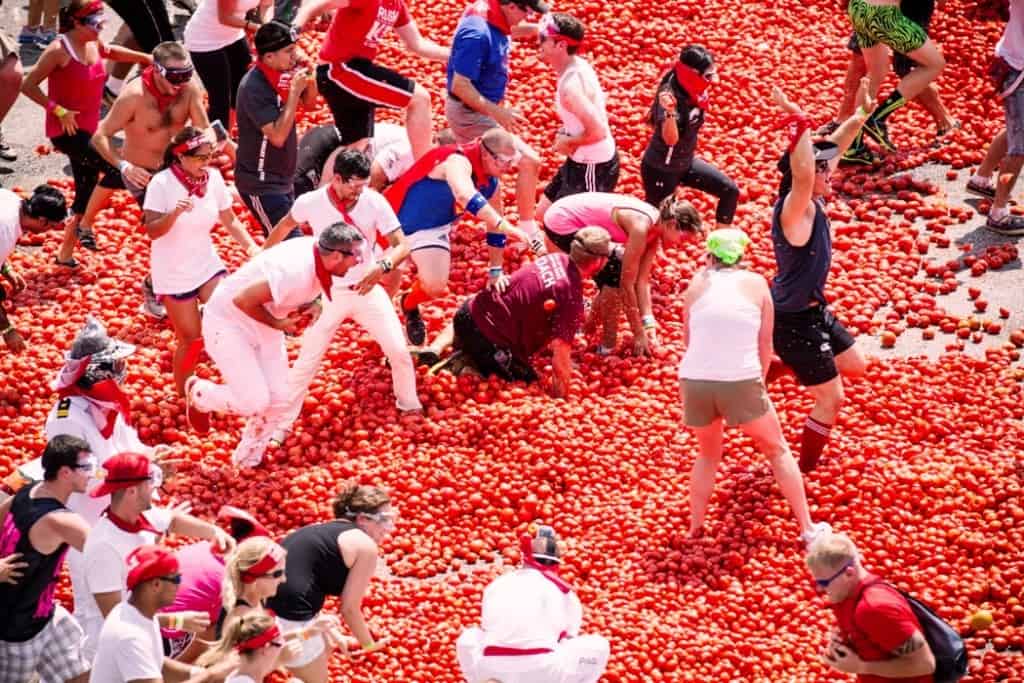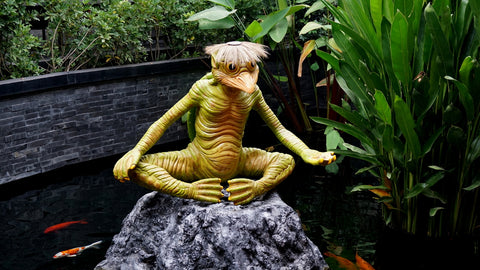Have you ever wondered why humans create such peculiar traditions? From dousing people in cinnamon to believing in forest-dwelling protectors, our world brims with fascinating cultural practices that often defy conventional explanation.
In Denmark, a peculiar tradition transforms ordinary streets into aromatic battlegrounds for 25-year-old singles. Unmarried Danes face a spirited cinnamon shower from friends and family, coating them head to toe in the sweet spice. This tradition, deeply rooted in Danish merchant history, connects to the spice traders who traveled extensively and often remained unmarried. The practice continues today, bringing communities together in playful celebration while maintaining historical connections.

Credit: Danish Cinnamon Tradition – Image via News18
Similar festive chaos erupts in Spain during La Tomatina, where thousands gather for the world’s largest food fight. Participants hurl overripe tomatoes at each other in a tradition that began as a local dispute in 1945. Both celebrations showcase how communities transform ordinary ingredients into extraordinary expressions of cultural identity and social bonding.

Credit: La Tomatina Festival – Image via Voye Global
Nature itself presents remarkable parallels to human traditions through incredible survival adaptations. Wood frogs demonstrate an almost mythical ability to freeze solid during winter, their hearts stopping completely. These remarkable amphibians produce special proteins that protect their vital organs, allowing them to thaw and resume life when spring arrives. Their survival strategy mirrors how human traditions often emerge from necessity and adaptation.
Capuchin monkeys display fascinating washing behaviors that scientists once attributed solely to cleaning food. Recent studies reveal these intelligent primates actually use this practice for social bonding and teaching younger generations. This behavior surprisingly reflects human cultural traditions passed down through generations.
In Japanese folklore, the Kappa water spirits embody both mischief and wisdom. These cucumber-loving creatures are said to inhabit rivers and lakes, teaching respect for water bodies while warning children about drowning dangers. Local communities still maintain Kappa-themed festivals and shrines, bridging ancient beliefs with modern water safety awareness.

Credit: Kappa Yokai – Image via Bokksu
Deep within Brazilian rainforests, tales of the Curupira echo through generations. This mythical guardian, with backwards-facing feet that confuse hunters, protects forest animals from excessive hunting. Indigenous communities share these stories not just as entertainment, but as crucial environmental lessons about sustainable resource management.

Credit: Curupira – Image via KCD Speaks
These protective spirits across cultures reveal humanity’s universal connection to nature. While Japanese communities honor water spirits, Brazilian tribes respect forest guardians, showing how different societies developed similar mythological frameworks for environmental protection. These parallel beliefs demonstrate the remarkable ways humans interpret and protect their natural surroundings.
Modern society continues embracing these traditions while adapting their meanings. Young Danes now share their cinnamon experiences on social media, while environmental activists reference ancient guardian spirits in conservation efforts. These evolving interpretations prove that even our most bizarre traditions carry profound significance in contemporary life.
References:
Danish Cinnamon Tradition – News18 – link
La Tomatina Festival – Voye Global – link
Kappa: Japan’s Enigmatic Aquatic Yokai – Bokksu – link
The Curupira: Brazilian Folklore – KCD Speaks – link
Categories: Culture, Do you know, Folklore, Mythology, Traditions
Tags: Cultural Heritage, Cultural Traditions, environmental protection, Festivals, folklore, Mythology, Rituals, supernatural beings
Religion: Various
Country of Origin: Brazil, Denmark, Japan, Spain
Topic: Cultural Traditions and Folklore
Ethnicity: Various


